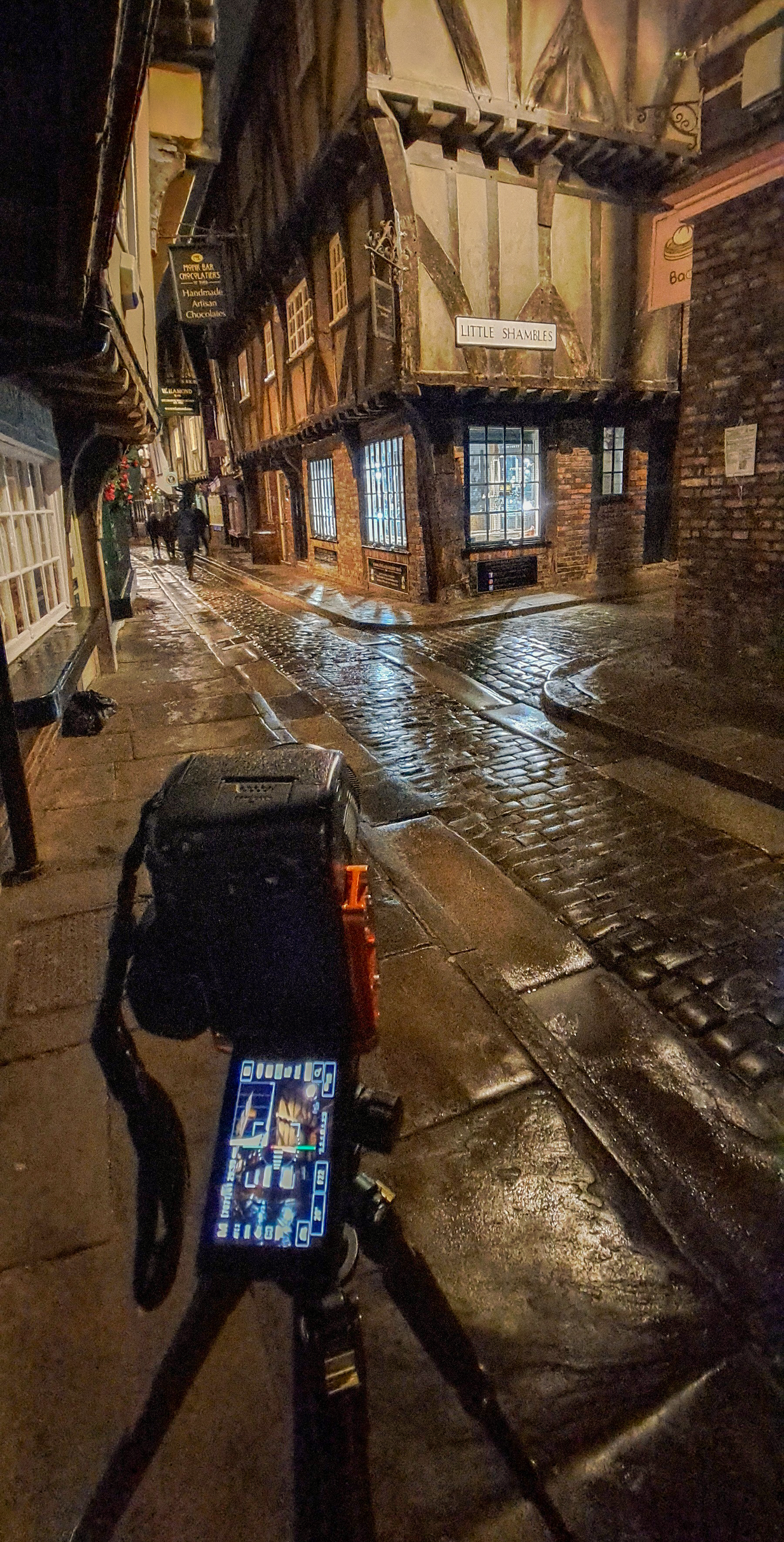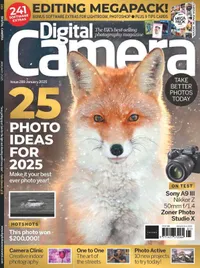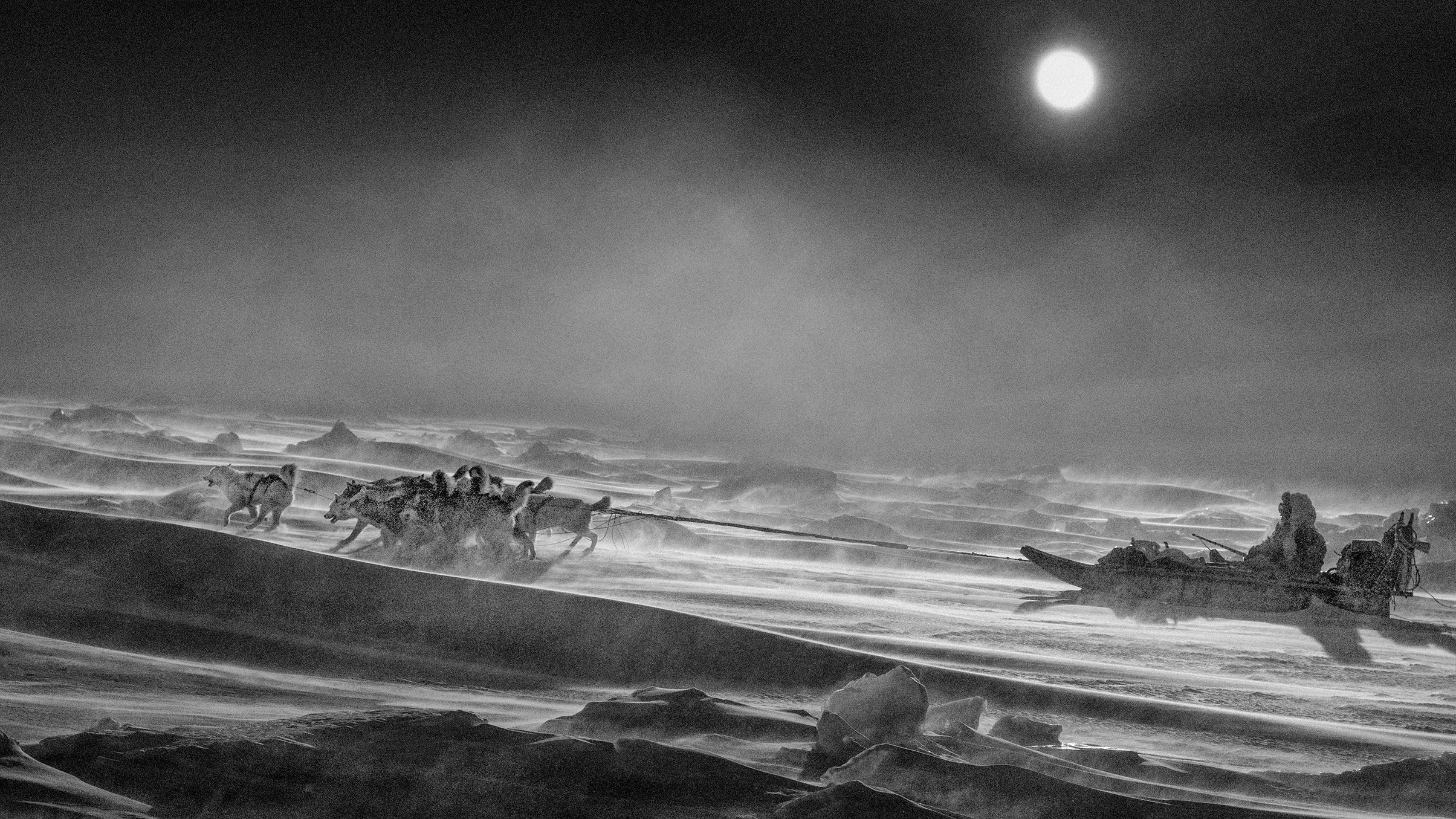Five quick tips for shooting historic locations at night
Andrew Bransby heads onto the medieval streets of York to reveal the secrets of successfully shooting historic tourist spots at night

The mediaeval cobbled streets of York Shambles are such a beautiful subject to photograph. Believed to have been the inspiration behind Diagon Alley in the Harry Potter series this street is consequently hugely popular with fans of the film series and the general public alike. As great as this is for the tourism industry, the alley’s popularity can make it difficult to take a clean photograph. The crowds do give you the option to utilise a longer exposure to create ghost-like figures walking through the alley, but for this image I opted for a gap in the crowds to get a more eerie, atmospheric.
1. Wet surfaces reflect light
When photographing at night it’s always handy to look for surfaces to bounce light off in order to help balance your composition out, rather than leaving a dark area. In this case the rain helped by wetting the cobbles and reflected the lights from the shops and street lamps. In the absence of rain, windows can always be handy too.
2. Be patient
When working in a busy location patience can be vital, whether it be that you’re waiting for an interesting character to come into your shot or you are waiting for a gap in the crowd to achieve the clean composition that you want. It’s already night, you aren’t going to lose anything by waiting.
3. Awareness of foot traffic
When working in narrow streets like this one it always pays to keep your head on a swivel and keep looking around. If using a delay timer on your camera to avoid camera shake, make sure you haven’t timed it as someone is about to enter your shot.
4. Change the height
Look for perspectives which others may not see or photograph, especially in honeypot locations. Whether you are getting your camera higher or lower it can create unique viewpoints others may not spot while simply walking along. The result will help your shot stand out from the crowd.
5. Tripod is required
Using a tripod when doing night photography can be hugely beneficial, especially in the absence of a large amount of light. Using one allows you to extend your shutter speed and to keep your ISO low, improving sharpness and reducing the amount of noise in your image.
Digital Camera World is the world’s favorite photography magazine and is packed with the latest news, reviews, tutorials, expert buying advice, tips and inspiring images. Plus, every issue comes with a selection of bonus gifts of interest to photographers of all abilities.
<p><a href="https://www.awin1.com/awclick.php?awinmid=2961&awinaffid=103504&clickref=hawk-custom-tracking&p=https%3A%2F%2Fwww.magazinesdirect.com%2FDCM-brandsite" target="_blank"><strong>Subscribe now with our latest subscription deal!To take long exposure photos at night you need a tripod and to carry that around you need a tripod bag. If you're shooting historic locations, why not use a classic film camera to do it with? And if you're going to be shooting a lot at night time, then consider investing in a camera that really excels at night time photography.
The best camera deals, reviews, product advice, and unmissable photography news, direct to your inbox!

Wendy was the Editor of Digital Photo User for nearly five years, charting the rise of digital cameras and photography from expensive fad to mass market technology. She is a member of the Royal Photographic Society (LRPS) and while originally a Canon film user in the '80s and '90s, went over to the dark side and Nikon with the digital revolution. A second stint in the photography market was at ePHOTOzine, the online photography magazine, and now she's back again as Technique Editor of Digital Camera magazine, the UK's best-selling photography title. She is the author of 13 photography/CGI/Photoshop books, across a range of genres.
You must confirm your public display name before commenting
Please logout and then login again, you will then be prompted to enter your display name.


